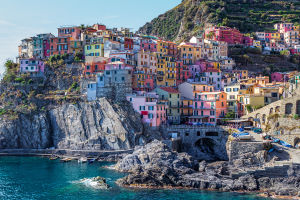Lighthouse
Tagore once said, "Love is a lighthouse that has been shining since ancient times, it looks at the storm but does not move."
A lighthouse serves as a critical guide for ships lost at sea, and it is a tremendous responsibility for those navigating on the waters. Despite its essential role in guiding ships, the lighthouse stands alone, silently watching over vessels coming and going, escorting them without any expectation of reward.
The lighthouse has been historically vital in guiding fishing boats without radar, weighing from a few tons to a dozen tons, for about 10-20 nautical miles off the offshore coast. Depending on the ship's height and tower height, the lighthouse's light can be seen up to 10 nautical miles away.
However, with the widespread use of radar technology, lighthouses have become less critical for navigating at sea.
In the United States, particularly in South Carolina ports, many small fishing boats without radar near the port create hazards for larger merchant ships during foggy days. In contrast, Germany's ships sail smoothly in the fog. This disparity highlights the importance of lighthouses and how their effectiveness varies by region and technological advancements.
The earliest recorded lighthouse in history was built in 283 BC by Sostratus of Cnidus during Ptolemy II's reign in Egypt. The Alexandria Lighthouse was about 130 meters high but was destroyed by two earthquakes in 1303 and 1323.
In 1480, the Mamluk Sultan of Egypt built the Quebec Fortress with the remaining stones to resist invasion, and the Alexandria Lighthouse was lost.
The Torre de Hércules in La Coruña, northern Spain, built around 1900 during the Roman Empire, is the oldest surviving lighthouse in the world, standing at a height of 55 meters. Following that, the development of lighthouses came to a halt during Europe's 1000-year-long medieval period.
In 1611, France built the Phare de Cordouan (Lighthouse House) at the mouth of the Gironde River, a 68-meter-tall tower with an interior filled with exquisite carvings and elegant porticoes. It is a Renaissance masterpiece and the highest achievement of ancient lighthouses.
However, the early lighthouses were built only as landmarks on the continent's coast, visible from afar at night by burning wood or lighting candles and were far from modern lighthouses.
Coastal structures vary greatly from country to country, with some locations having blocked hills or thick reefs, making it unsafe to navigate even with a lighthouse in sight. Moreover, with the advent of the era of great navigation, there arose an urgent need to project lighting technology that could cover greater distances.
Augustin Fresnel's invention of the Fresnel lens, commonly known as the bull's-eye lens, in 1819 further enhanced the projection distance of light and significantly reduced weight and cost, having a profound impact on the development of lighthouses.
Four years later, it was first installed in the House of Lighthouses in France. Since then, lighthouse technology has continued to improve, with acetylene lamps being replaced by electric arc lamps and now by LEDs. Solar automatic controllers have been replaced by more advanced sensors.
Using intelligent controllers, each lighthouse can now create its unique strobe frequency, allowing passing ships to know where they are by recognizing the frequency.
However, with the advent of modern technologies like GPS, AIS, and radar, the role of lighthouses in navigation is becoming more limited. Nevertheless, lighthouses are gradually becoming landscape landmarks everywhere, allowing people to remember and get closer to nature.


